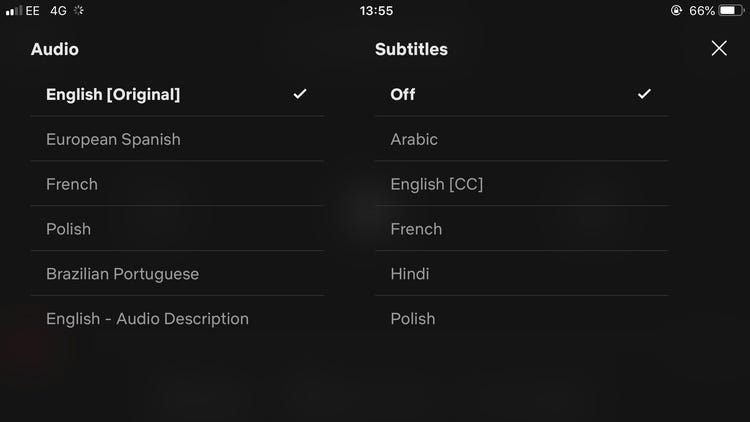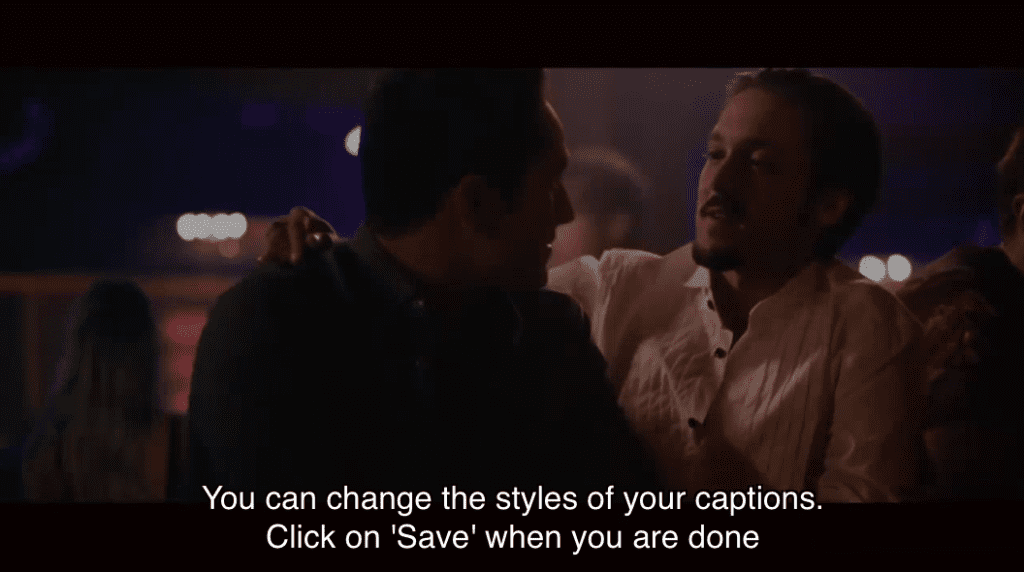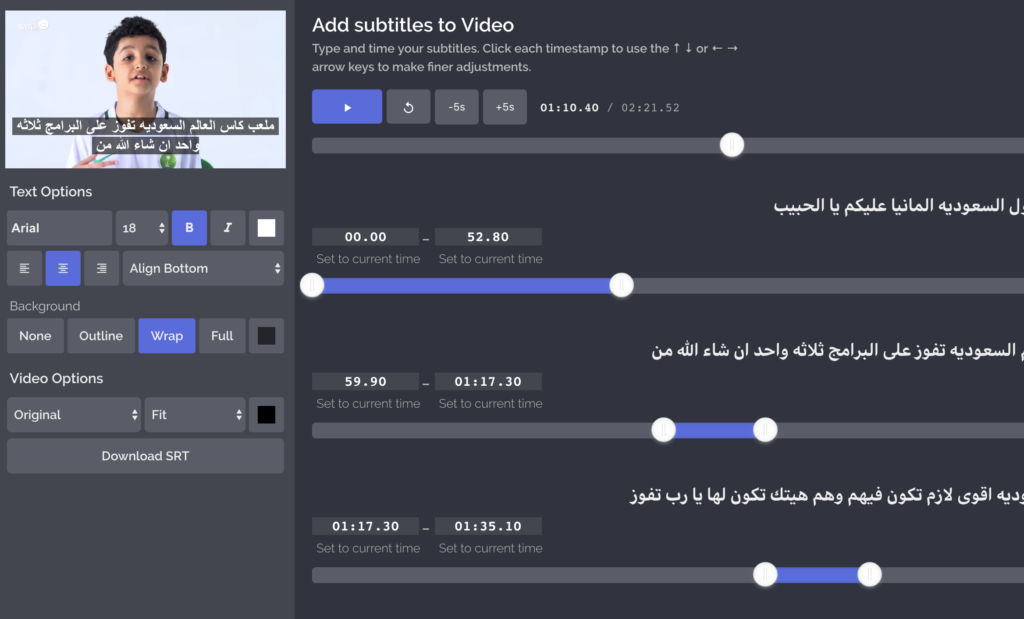Subtitling is an instrumental part of optimizing and streamlining your media outreach. Most of the audience in the media industry are visual learners so the demand for quality videos is increasing day by day. As digitalization has made the world a global village, consumers now expect relevant and local information that they can relate to. If you’re working in the media industry, chances are you’re experiencing the industry’s challenging demands around speed, quality, and cost.
The struggle is to increase your global video reach while maintaining the quality of your subtitles. Without knowing the fundamentals of subtitling, you may risk losing your valuable prospects due to a lack of background knowledge. For this reason, we’ve put together for you the five most important things you need to know to achieve quality subtitles at scale.
1. Which type of subtitles are right for my video?

Above anything, the first and most important thing to know is its types. Any video content with motion pictures has a story that is demonstrated through movement and gestures. The core message of this visual demonstration can be spread across a wider audience of any country apart from the native public using subtitle localization. Viewers watching videos with subtitles often belong to different cultural contexts. Each culture has a particular set of norms and preferences. People often prefer those subtitles that pertain to their psychological and cultural preferences. Similarly, some viewers are more quick readers requiring fast subtitles while others prefer a slower pace. Moreover, some of them just need subtitles as a supplementary explanation of the words spoken in the video. Therefore, to engage your audience, you must provide them with their required type of subtitle service.
Intralingual Subtitling
Intralingual Subtitling refers to the subtitling being done in the same language as per the one being spoken in the video. Some viewers are more capable of following subtitles appearing on the screen instead of just listening to it through audio delivery. These viewers are comfortable with the intralingual subtitles that are in the same language in which the video content is made. They just need to enhance their understanding of the original video through complimentary subtitles as an additional service. Similarly, sometimes the delivery of dialogue remains vague or rapid enough to remain comprehensible until a supporting subtitle appears to let the viewer understand what was said.
Interlingual Subtitling
Another type of subtitles includes interlingual subtitling which, as the name suggests, is to translate the narration from one language to another foreign language. By this service, the chance of reaching maximum people increases exponentially. This is because suddenly a foreign video content becomes accessible and understandable to a whole new range of viewers just by adding quality subtitles using a language other than the spoken one in the video.
Here one needs to understand that subtitles are something different from SDH (Subtitles for the deaf or hard-of-hearing) as the latter is used to facilitate people with hearing impairment. Whereas, the subtitles are meant for people who can hear and they provide language replacement for the spoken word i.e. translating it comprehensively.
Now the question arises as to which sort of subtitles to use for your video? According to the best industry practices, it is recommended to incorporate bilingual subtitled translation that caters to both local and global audiences. Facilitating subtitles in both native and foreign languages make your videos more inclusive and help improve the SEO ranking as well.
2. Where should I place my subtitles?
Subtitle placement is an integral part of your video product. To optimize your subtitles, you must comply with the suitable trends and best practices recommended by media professionals in your industry. Knowing the different types of subtitle placement will help you tailor your video according to your target market’s demand. Subtitle placement types include:
Hard or Open Subtitles: Hard subtitles (also known as hardsubs or open subtitles) are internal subtitles which are made an irreversible part of a digital media stream. As they are included in the video frame, they can be played directly with the original video without any additional plugin support. The language of the subtitles can’t be switched between other languages as it has now become a segment of the original video frame.
Soft or Playback Subtitles: Soft subtitles, often referred to as softsubs or playback subtitles) are contained in a separate text file outside of the video file. These files can be in a variety of formats such as .srt, .sub, .vtt. The softsub file is usually included alongside the video product and viewers have the option to toggle it on or off in their video player, if the player supports it. Often, the text rendering quality of the player facilitates subtitle optimization and fine-tunes them according to the video timeframe, custom font style, and required speed.
Closed or Pre-rendered Subtitles: These subtitles can be turned on or off according to the need and they are not imposed onto the video frame. However, they are present in the streamed video content and can be switched to different available languages.
The subtitle placement should be chosen based on the viewers’ requirement as well as your product marketing strategy and goals. If you have to provide the subtitles in live videos with tight time constraints, then they should be placed as hard subtitles so that they can be viewed in real-time by your viewers globally. However, if you are using subtitles for your ad videos, then the optional closed subtitles are best suitable for various online media platforms. On the other hand, if you are providing a personal subtitle service to a client and there are no strict specifications mentioned then it would be better to use soft subtitles, sent as separate text files. This is because they can be preserved and added by the clients according to the available player support later.
3. Do I need language replacement?

Language replacement in the media subtitling context means to provide a convenient substitute for the spoken content in a video. This is facilitated for the people who either cannot understand the language being spoken in the original media or the people who just need further explanation. Language replacement is a translation technique and knowing its types will help you understand which type of service would be best suited for your clients.
Subtitle Translation: The subtitles differ from other forms of language replacement essentially because they provide substitutional text to interpret the language being spoken in the video. As the text displayed as titles is normally placed below the visual characters’ display capacity, it is called ‘sub’ i.e. bottom / additional / under.
Dubbing: In dubbing, the voice of the speaker becomes replaced with the dubber’s voice. The dubbed voice overlaps the original voice completely in a way that it portrays all emotional nuances and voice modulation tactics as per the dialogue delivery. Unlike lectoring where the voice in the background can still be heard.
Voiceover: Voiceover is usually used to incorporate narrative style in the videos or audios. Although dubbing can often be mistaken as voiceover, the former is mostly to do with re-recording the audio while maintaining lip synchronization, tone, and emotion of the original speech. Whereas, the latter is mostly devoid of emotive and tonal significance and the original track can still be heard in the background.
Captioning: Captions are mostly transcribed visual text of the audio that is being heard during a media stream. Subtitles are provided assuming that the viewers are hearing the audio simultaneously without understanding the language being spoken. However, most of the time, captions are intended for people who cannot hear.

After reviewing the different types of language replacement, it is easier to understand which sort of solution you need for your specific media project’s audience. If your viewers are interested in listening to the original sound along with the additional subtitled translation, you should go for the option of language replacement through subtitles. In contrast to the dubbing or voiceover language replacement that overlaps the real speech, the subtitling solution can be an added advantage for your viewers. It will allow them to choose their preferred translation from an array of multiple available languages. In doing so, it would not only lead to a wider audience but will also help in preserving the original emotions and tone of the spoken words in the video.
4. How do I check my subtitling quality?

By planning for and checking the below quality indicators, you can have an edge over your competitors in the media market.
1- Placement: The placement of the subtitles in a video frame should be precise and proper so that they don’t get in the way of visual content and feel easy on the eyes as well.
2- Delivery Speed: The appropriate word per minute (WPM) speed standard should be followed while displaying the subtitles to avoid making them too fast to read. Experts suggest a speed between 160 to 180 WPM.
3- Localization: Subtitle localization means to tailor your translated display text according to the target audience using language adaptation techniques. The localization of subtitles is done keeping in mind the local context of reference regardless of the standard alternative translations.
Why is Subtitle Localization Important?
Subtitle localization is important because it not only helps increase your audience range but also helps in getting your brand message across a broader spectrum, more accurately and engagingly. Most of the time, your viewers are more interested in seeing their native language text displayed along with their favorite brand image. They feel more connected to it as it seems more accessible to them.
Foreign languages are not only unfamiliar to the audience but to some extent, intimidating too. Subtitle localization transforms the foreign video content to become comfortably familiar to the viewers. Scaling your media business by improving the subtitle production and placement is something that should be a part of your video marketing plan from the very start.
Automation: Subtitle automation is more like adding captions through an automatic, AI-Inspired editor. Although the auto-generated subtitles are as intelligent as manual ones, sometimes they prove to be speedy and timely enough to increase productivity by managing tight deadlines.
Engagement: More than 40% of the Non-Native American public admit that their ESL skills are below average. Most of them watch subtitled videos not only to understand the content but also to use it as a learning tool for language proficiency. Other native speakers still prefer subtitles to retain the information visually. Engage your audience by catering to their subtitling needs.
Tone: The quality subtitles should be mindful of the language tone, narrative style, and dialogue emotion of the spoken words.
Synchronization: The number of words appearing on the display screen at a time and the synchronization of title text according to the timestamp of the audio speech moments must be harmonized and accurate. The text alignment should be proper and to avoid any possible offset that may annoy the viewers.
Consistency: Ensuring consistent language style and word usage throughout the video subtitles enables a seamless, quality experience for your audience.
A well-crafted subtitling solution plan needs pointers to enhance the standards and take it up several notches. For this purpose, you should study the competitive market data available for the media subtitling industry and follow the mentioned pointers. By analyzing these improvement features and incorporating them suitably in your videos you may make or break the quality of your subtitling service in the media industry.
5. How do I achieve quality subtitles at scale?

A smart streamline strategy helps scale your subtitling budget internationally by making optimum use of the available resources. By subtitling a single video using multiple languages, you can not only generate more leads for your business but you can also cut down the cost of making several independent videos. The key to your subtitling strategy is to combine the speed of automation and the accuracy of human talent.
Especially, in infomercials and brand endorsement videos, captions and subtitled text grab the attention of the viewers instantly. When the audience is engaged, the chance to grow your potential customer base increases. During navigation through rapid localization demands the subtitles and managing production with tight delivery timelines, the track metrics count a lot.
The number of views, click-through rate, video completion rate, average view time, etc. are some of the most important for monitoring tools for measuring public engagement and interest. This helps in gauging their demand and requirement for quality video content produced by your company. By knowing these statistics and following the performance-based quality indicators, you can shape up a consistent media strategy to scale your subtitling business in the industry.
We at Tarjama understand that subtitles are a crucial part of your video product and they must be done with accuracy. Learn more about our premium-quality subtitles offered in 55+ languages for 200+ industries worldwide.
References:
https://www.ncbi.nlm.nih.gov/pmc/articles/PMC6007935/
https://www.primefocustechnologies.com/blog/leveraging-cloud-technologies-in-subtitling-task-management-artificial-intelligence-security/
https://www.textmaster.com/blog/localizing-video-subtitles/
https://bulletinline.com/2020/08/03/captioning-and-subtitling-solution-market-size-2020-industry-share-strategies-growth-analysis-regional-demand-revenue-key-players-and-2026-forecast-research-report/



















